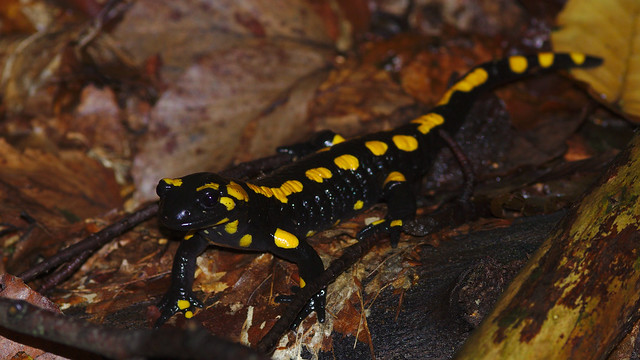 |
A young Bufo marinus (Cane Toad). Darwin, Northern Territory (Photo credit: Wikipedia)
|
It is common for a toad to be mistaken for a frog or a frog to be mistaken for a toad. Both are, in fact, amphibians and they have similar body shapes to the untrained eye. The reality is that toads are different from frogs. Unlike most frogs, toads have dry skin, they have warts, they have crests behind their eyes and they have parotoid glands. A poisonous secretion is produced in their parotoid glands called bufotoxin. Bufotoxin can cause death in smaller animals and may trigger an allergic reaction in humans and other animals. Toads secrete bufotoxin to defend against predators, so you should avoid contact when possible.
Toads come in a variety sizes; the smallest being the Oak toad or Bufo quercicus that only reach a length of 1.3 inches, and the largest being the Cane toad that can grow up to nine inches in length. The Oak toad resides in North America while its relative the Cane toad lives in Australia.
A toad's diet and lifespan can vary as much as their size. Toads mostly eat a diet of insects and other arthropods but there are some species that feast on reptiles, small mammals and other amphibians. One species of toad, the Bufo bufo or Common toad can live up to forty years but most species only live a modest five to ten years.
Toads can be found on every continent except for Antarctica. Regardless of where they live they generally seek out the moist, open habitats of grasslands and fields. For those of you that enjoy gardening, a toad in the garden should be welcomed from a distance as they will eat harmful insects out of your garden.
Like frogs, male toads use a unique call to attract females for mating or to warn off would be male trespassers into their territory. After a successful mating, the female lays fertilized eggs that eventually hatch into tadpoles, which is also the beginning of a metamorphosis from tadpole to toad. Unlike their parents, tadpoles can breathe underwater through specialized gills and they have tails to swim with instead of legs. The tail becomes smaller over time until it disappears completely while at the same time it begins to grow legs and lose its gills and develop lungs. Although not all toads have a tadpole stage, they all need clean, unpolluted water to reproduce.
During the winter, some species of toad hibernate. They do this by burrowing deep into the soil, just below the frost line. When the weather warms up they emerge to resume their toad-like activities as if waking from a good nights sleep.
Really there isn't too much difference between most species of toad and most species of frog. The real difference is between terrestrial toads and aquatic frogs. Aquatic frogs have long, strong muscular back legs utilized for propelling through the water and leaping from the shoreline into the safety of a nearby pool. Toads back legs are designed for short hops and meandering walks.
|






